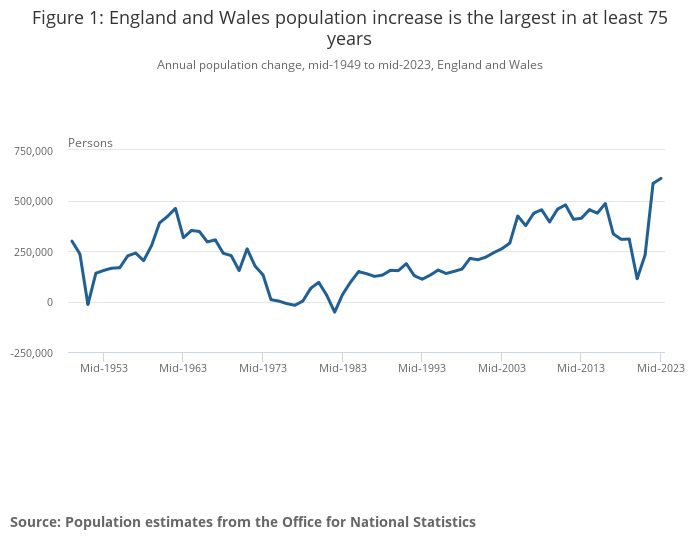
For organisations working to address social challenges, like Community Foundations, understanding who lives where and in what circumstances is a critical part of informed service provision. This means that having access to accurate, timely population data is crucial for accurate local-level analysis.
The mid-year population estimates (MYEs) are produced annually by the Office for National Statistics (ONS), and provide us with the best annual estimation we have of England and Wales’ population.
By building on the most recent census data, accounting for population changes driven by births, deaths and migration, the ONS provides the most up-to-date picture of demographic trends, filling the gaps between the Census.
The importance of MYEs for evidence-based decision-making can’t be understated – in this post, we share how these estimates benefit organisations like yours, and how you can make the data actionable and accessible.
Mid-year population estimates (MYEs) are annual updates provided by the Office for National Statistics (ONS) that give us an idea of the population in England and Wales as of 30 June each year. The ONS uses a strategy called the cohort component method to calculate this estimate, which builds on census data, adjusting for population changes due to births, deaths and migration.
Following each Census, the ONS refines their methodology and applies what they’ve learnt to previous MYEs. Following the 2021 Census, 2011 – 2020 MYEs were adjusted to align with this new methodology, improving both current and previous estimates. This is then used to inform population metrics, like increase over time.

Without accurate, up-to-date population data, you risk basing your decisions on outdated or incomplete information.
MYEs enhance the reliability of every indicator that uses population-based denominators – including unemployment rates, health outcomes, or educational attainment. These indicators are critical for understanding community needs, assessing the impact of interventions and planning future services.
With the ONS’ refined methodology the updated historical data improves:
The ONS provides comprehensive MYE datasets and methodological guides to help you to understand and apply the data effectively. These resources are available on the ONS website:
Our platform, Local Insight, incorporates MYEs into any of the population-denominated indicators within hundreds held. These cover a wide range of topics such as health, housing, education and employment and by integrating MYE data, we ensure that these population-dependent indicators are based on the most reliable and up-to-date population estimates.
If you’d like to see how Local Insight can support your organisation, get in touch to schedule a demo.
There are likely still situations where the Census 2021 population figures may be better suited for a task, such as detailed demographic breakdowns that are only available from the Census. Generally we would say that MYEs are recommended for a more up-to-date picture of the population in your area, which is why we make it a priority to update our population-denominated indicators.
When working on highly localised analysis, granular levels of detail (such as single-year and sex breakdowns in small, low-population areas) may be suppressed to maintain confidentiality – which can reduce accuracy.
This can also affect custom age bands built from those single-year breakdowns.
It’s also worth knowing that the ONS is also planning to begin producing Admin Based Population Estimates (ABPEs), which rely on administrative sources linked together (such as health, tax and education records) to create a population estimate for each local authority.
ABPEs have their own challenges, such as data consistency, but more frequent, granular updates means they could complement or even enhance the MYE methodology in the future.
We’ll be following the ONS on this closely and will adjust our own processes based on their lead.
A new need for deeper place-based insight When Arts Council England launched…
More
The 2025 Index of Multiple Deprivation (IMD) provides an updated view of…
More
The English Indices of Deprivation 2025 (IoD 2025) have now been published…
More